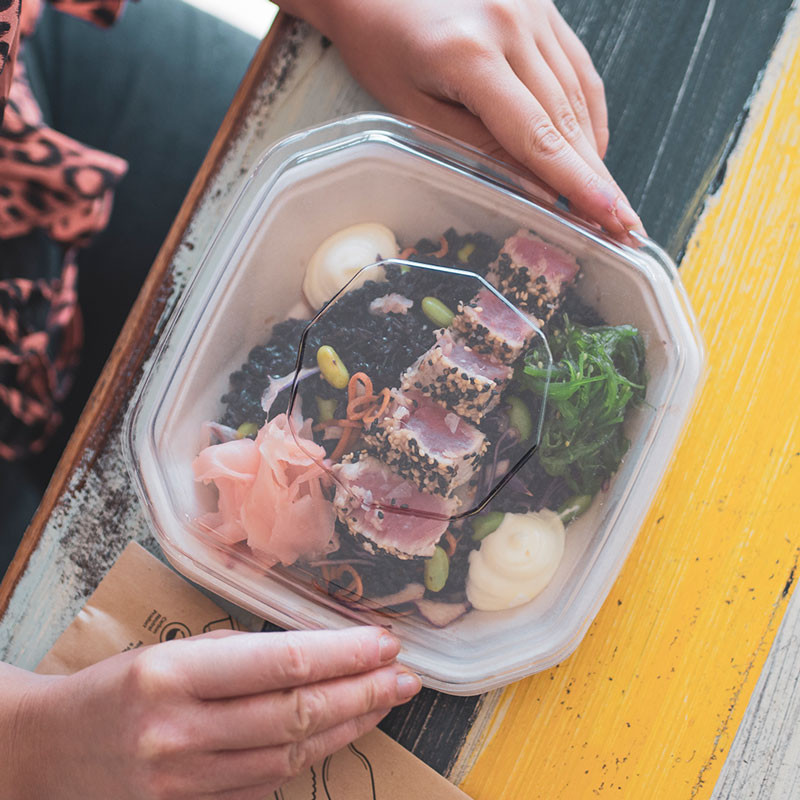
Sustainable Swaps for 2020
7th Feb 2020
With the world's attention on the plastic crisis, businesses have a bigger role than ever to play in moving us forward to a sustainable future. In 2019, the world's attention was drawn ever more forcefully to environmental issues – most notably climate change, in lieu of the bushfires and the school strikes, and our recycling crisis, after China started refusing our waste. Consumers began to look more closely at their personal impacts, and the impacts of those brands they support. So how you can, as a foodservice brand, make a difference in 2020? Hint: it could be in the packaging. We generate 2.01 billion tonnes of waste globally, and yet we have not worked out how to deal with such a large amount of waste in an environmentally responsible way. By changing your foodservice packaging, you can contribute to reducing the waste we produce – and help your business, by appealing to eco-conscious consumers. If we want to work towards a waste-free, circular economy future, businesses are going to have to lead the way. Here, we have provided 5 sustainable foodservice packaging swap suggestions that you can make in 2020.

1. Plastic-Lined Coffee Cups
Australia alone throws out 1 billion disposable coffee cups each year. Australia throws out 1 billion disposable coffee cups each year. They cannot be recycled, due to their plastic lining, and so all these 1 billion cups end up in landfill.Businesses are swapping out conventional plastic-lined coffee cups for BioCups lined with Ingeo plant-based bioplastic. This entire cup is industrially compostable and Ingeo emits 70% less carbon in production than traditional plastic.
2. Plastic Takeaway Containers
Takeaway containers can easily be replaced by bioplastic alternatives. The typical plastic takeaway containers are made from finite fossil fuels, and have a useful lifespan of minutes but take hundreds of years to break down, inevitably in landfill. As an alternative, BioCane takeaway containers made from bagasse (sugarcane pulp, a waste product of sugar production) will compost in 180 days, and are made from renewable materials.
3. Polystyrene Packaging
Polystyrene is made from toxic ingredients and cannot be recycled. Polystyrene, a commonly used material in packaging, is made from the toxic ingredients Styrene and Benzene, and it cannot be recycled. Small pieces from degrading polystyrene are ubiquitous and easily find their way into grass or water bodies where they can be eaten by unsuspecting animals or leach their chemicals into the environment. BioBoard takeaway containers have the same form and function, but are made from FSC certified cardboard taken from responsibly managed forests.
4. Plastic Straws and Cutlery
Plastic cutlery does as much damage to the environment as plastic straws. Plastic straws have been dubbed the enemy in mass media, and it is not uncommon for cafes to use paper straws or go without unless by request. However, other sources of plastic have not received the same amount of attention, but can be equally as damaging to marine life and take just as long to break down in landfill. Plastic cutlery is one such culprit, and so are all the single-use items in this article. However, just like the rest of the items we speak about here, we also have replacements for straws and cutlery. BioStraws and wooden BioCutlery are made from FSC certified paper and birchwood sourced from responsibly managed forests.
5. General Waste
When in landfill, food waste contributes a significant amount to climate change. Food waste is not plastic, but it is not harmless either if disposed in the wrong way. Residue on containers from food can prevent them being recycled, and food waste in landfill – where it released the potent gas methane as it decomposes – is the third largest contributor to climate change. However, food residue on packaging is not a problem if the packaging is compostable. By composting food waste and bioplastic packaging, you will reduce your waste to landfill and lower your carbon footprint, as well as create nutrient-rich compost that can nurture crops and contribute to a circular economy.
But … Where Do We Buy These?
If you're on our website, you must have a pretty good idea. Head on over to our products page and see what we're offering.
Information taken from this article on BioPak's website. For more information about how you can have a sustainable 2020, check out this post on our blog.
Planet Friendly Packaging acknowledges the traditional custodians of the land on which we work.

